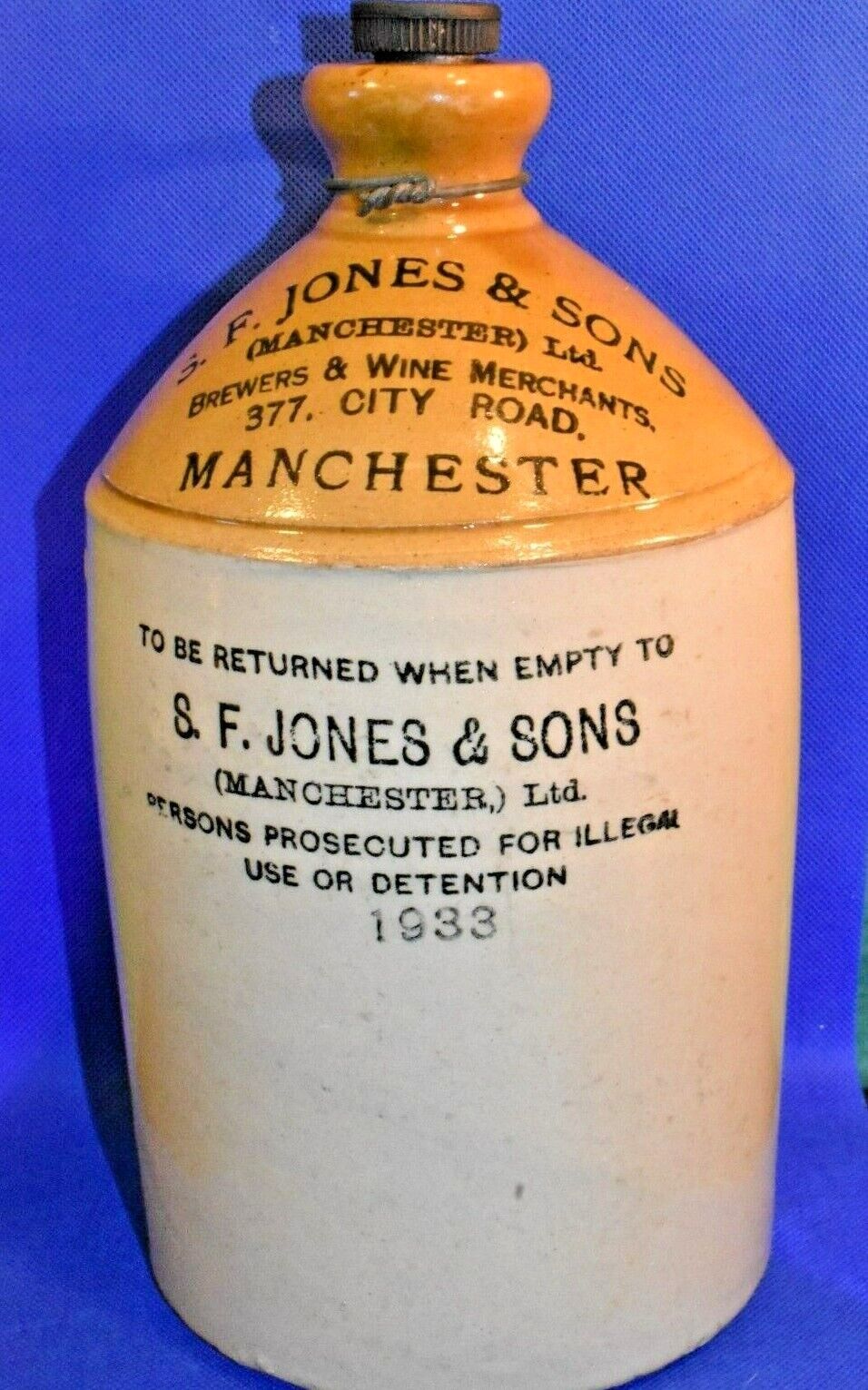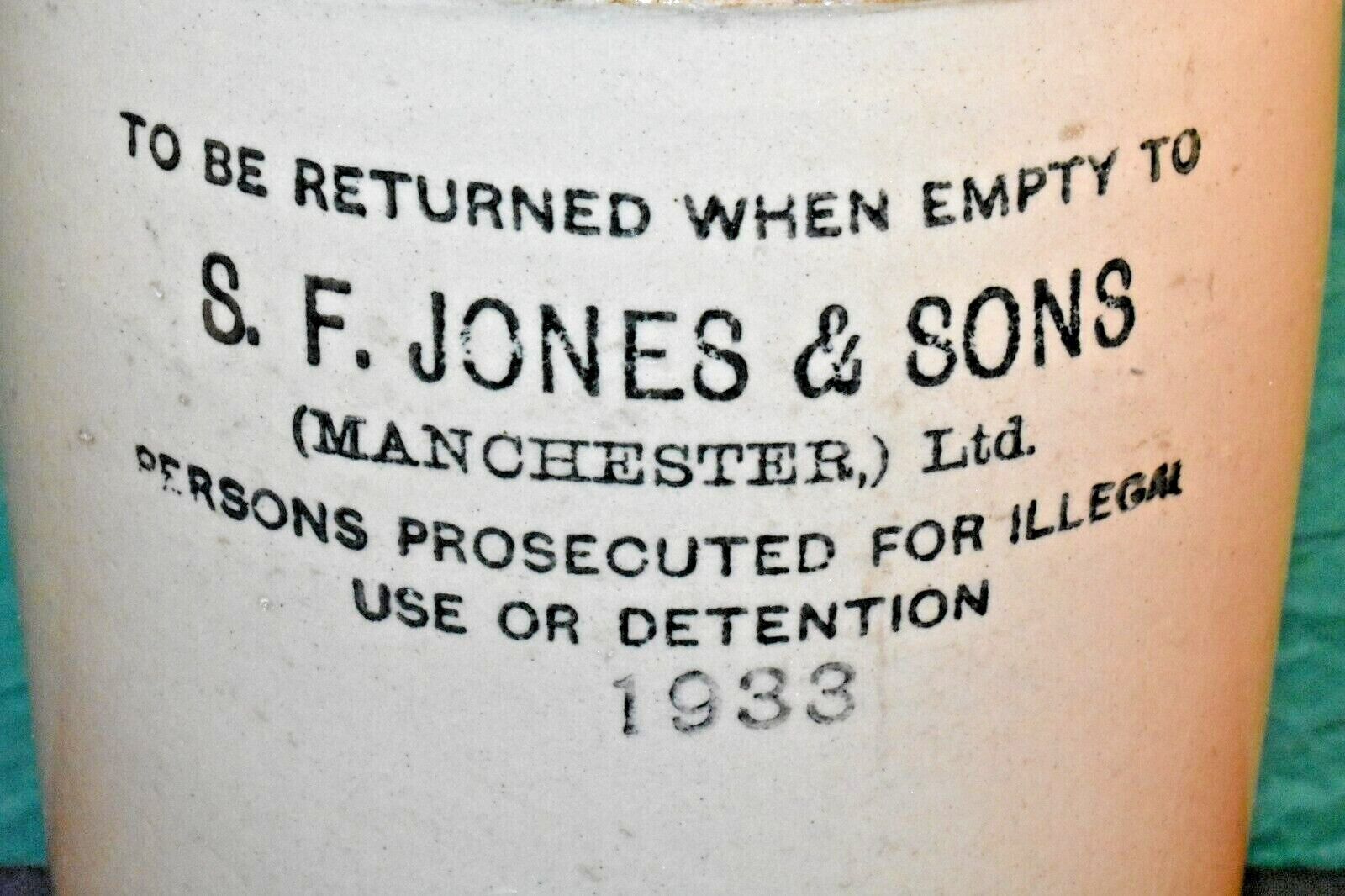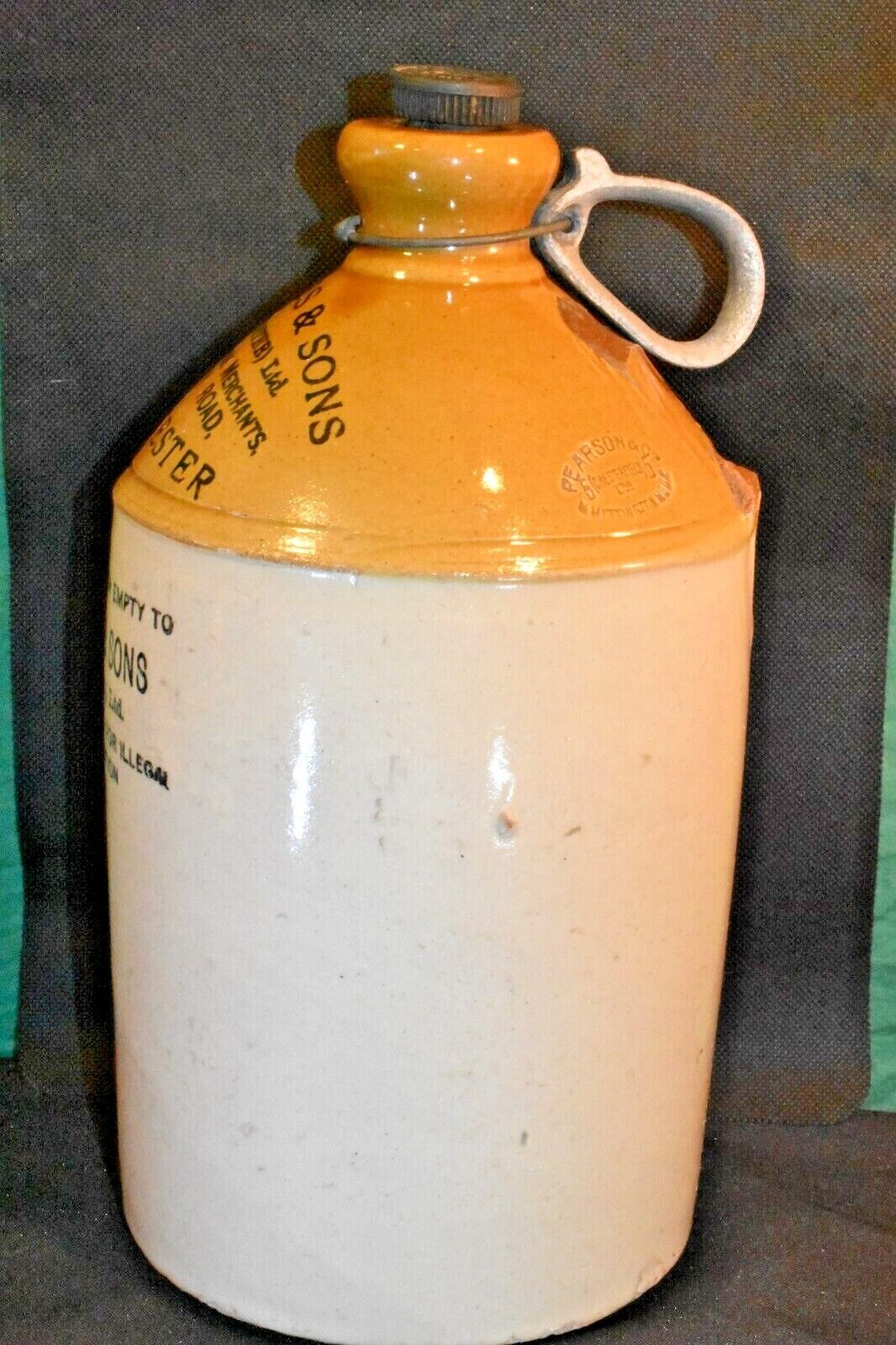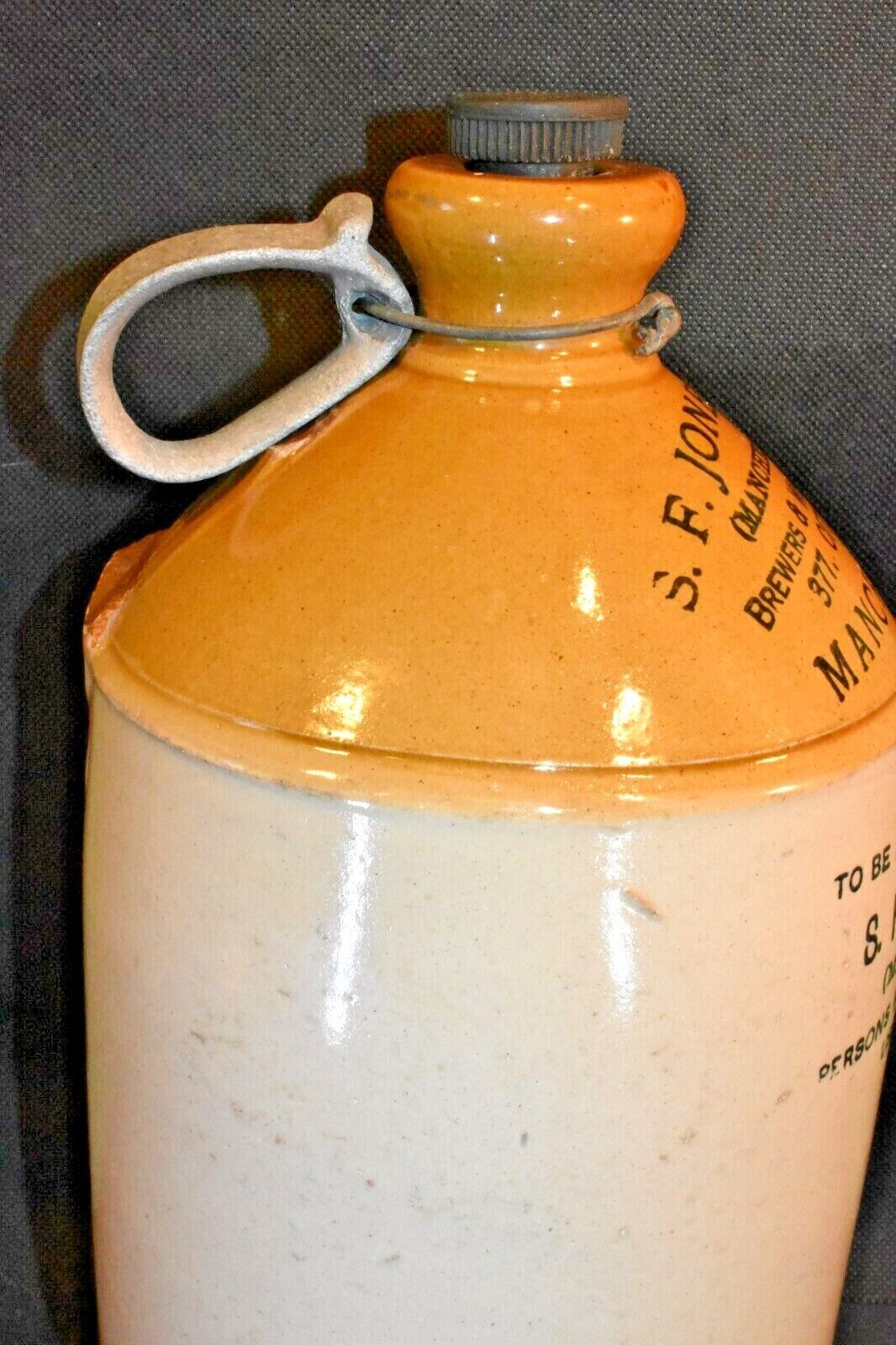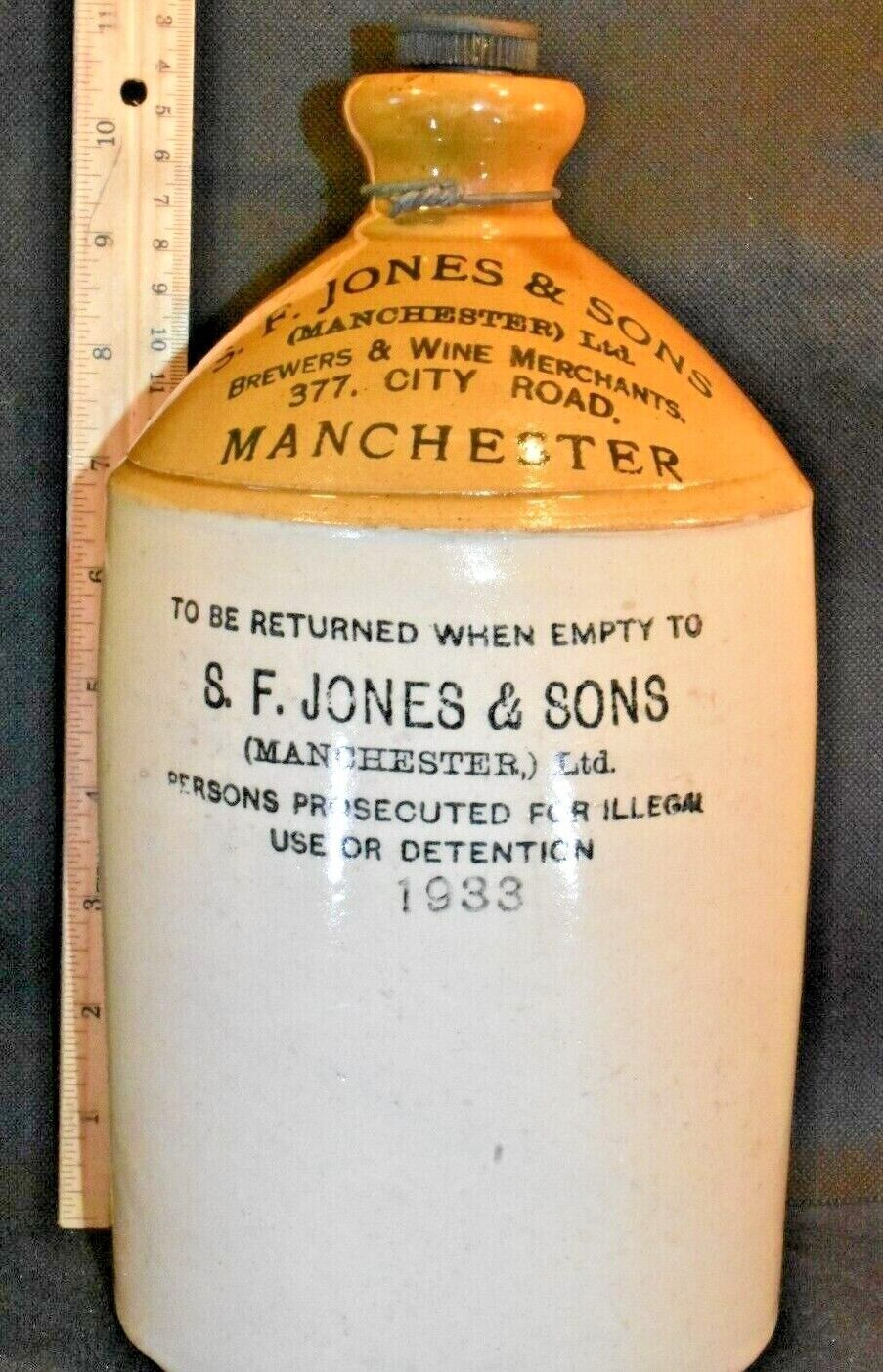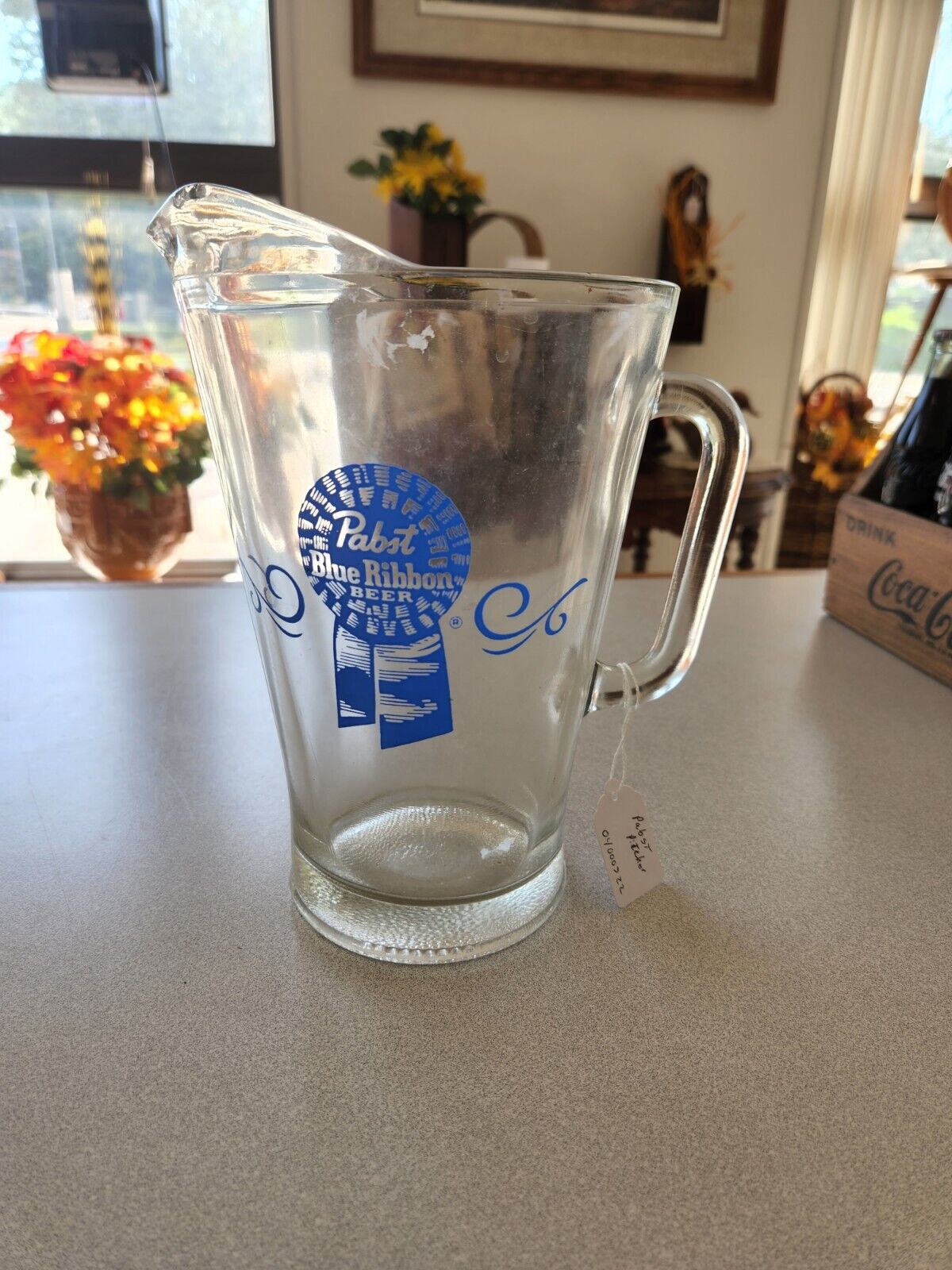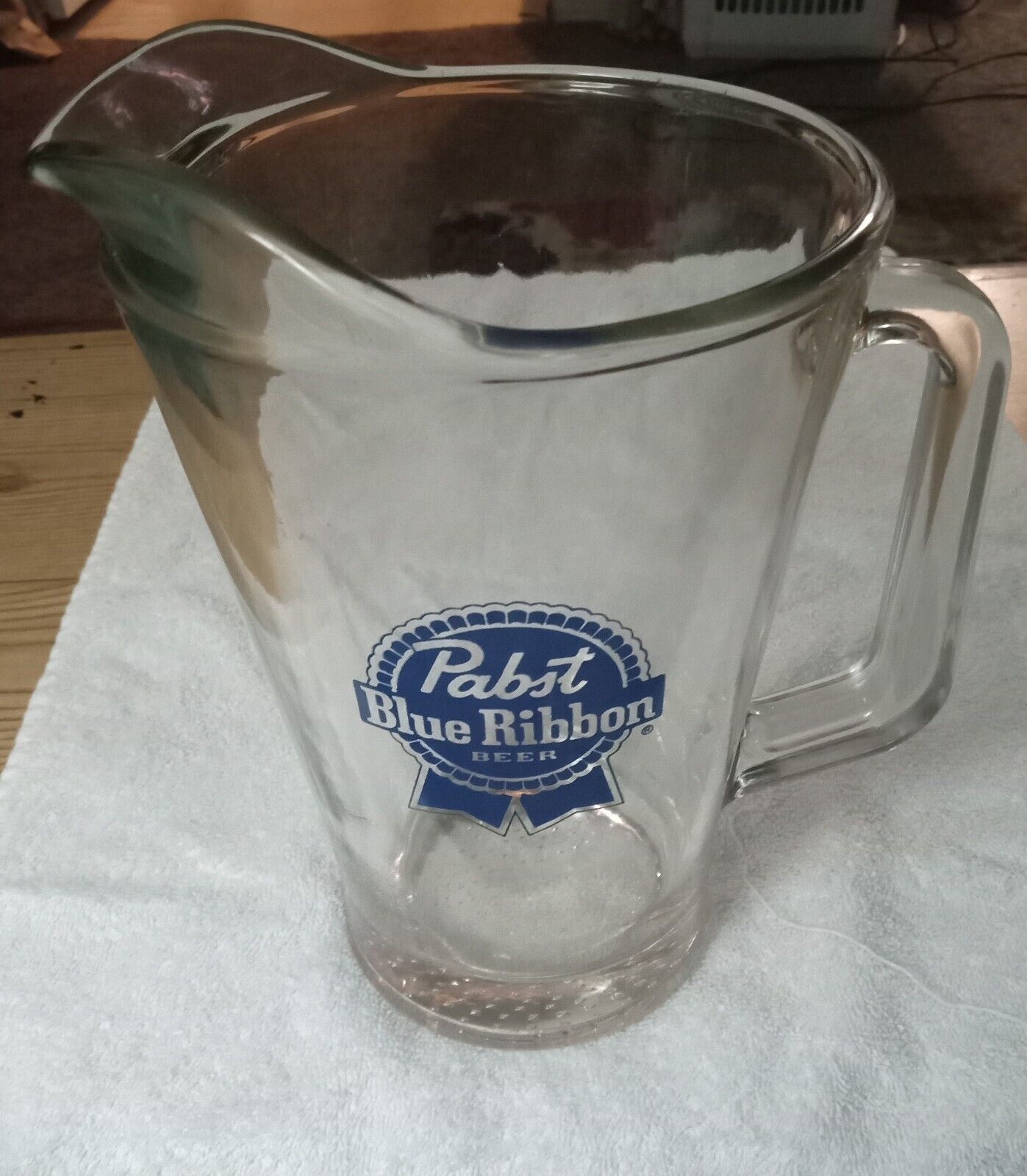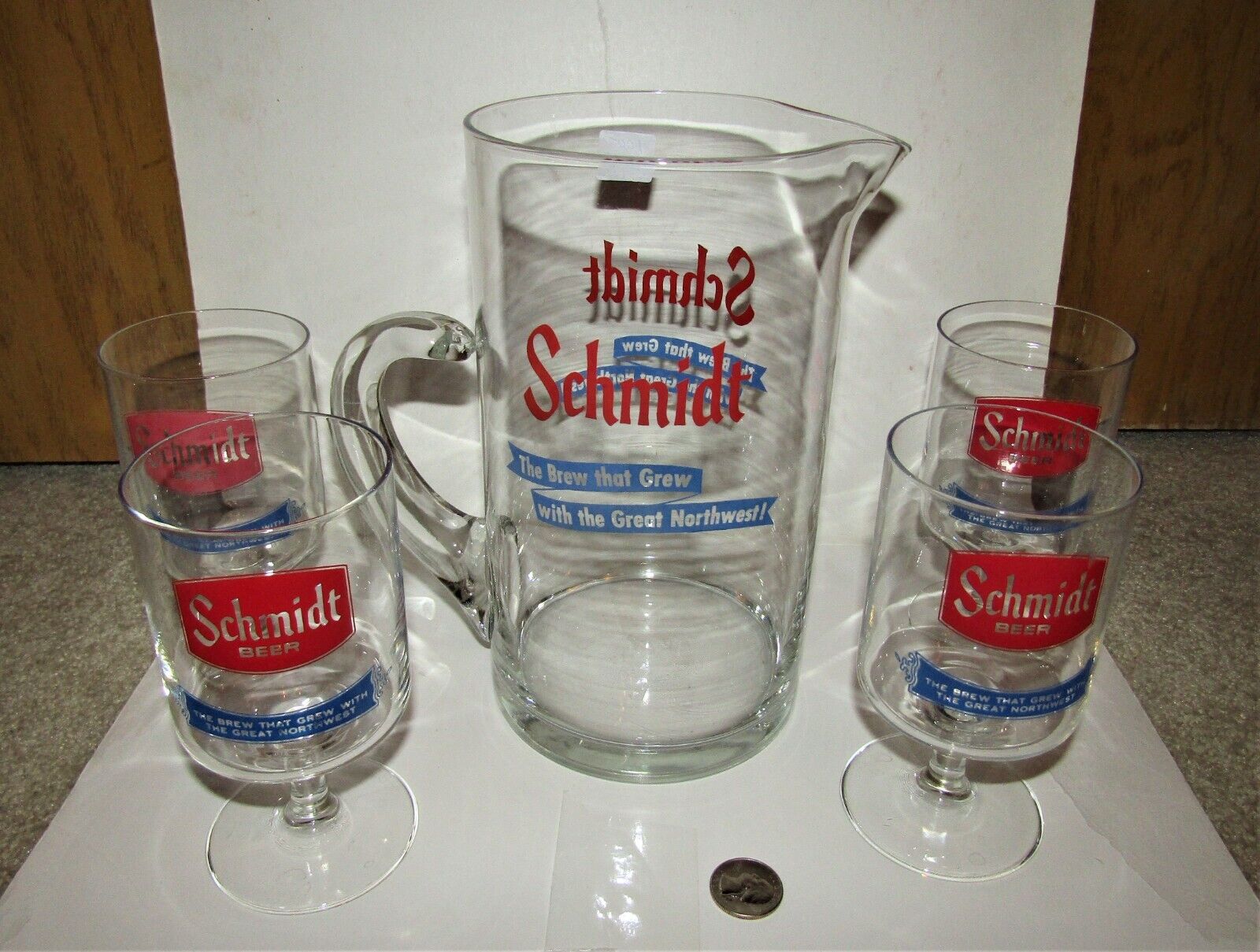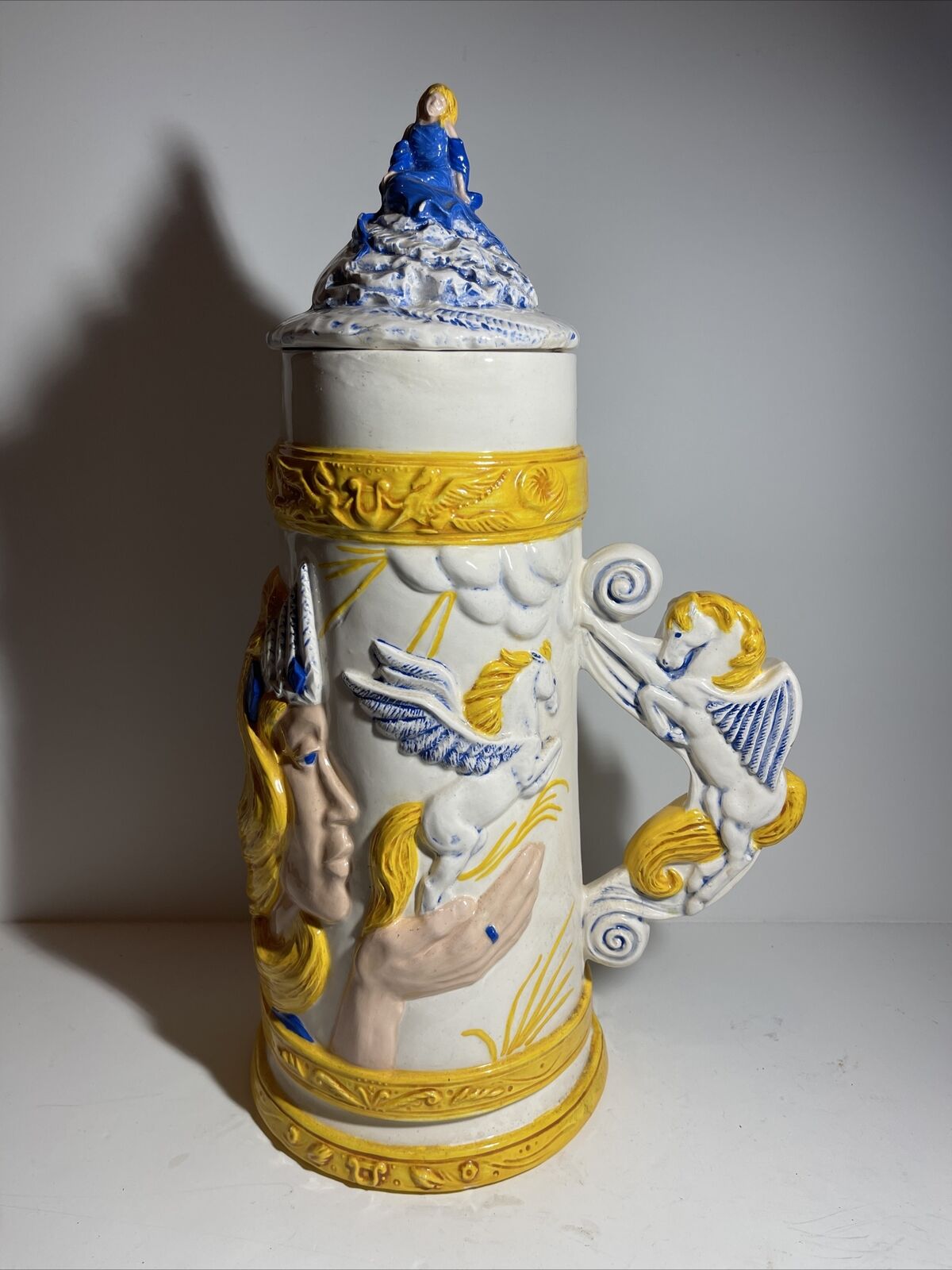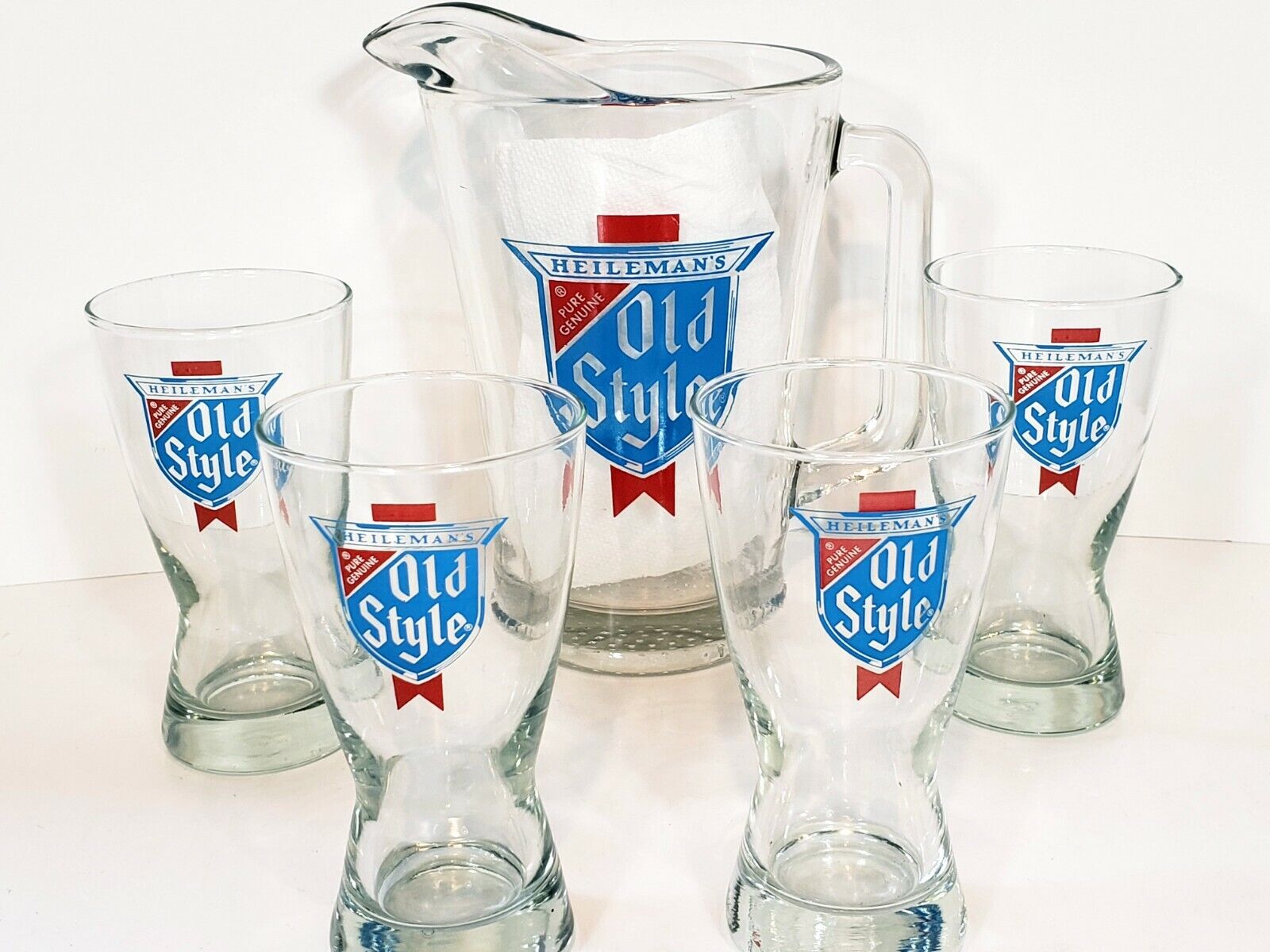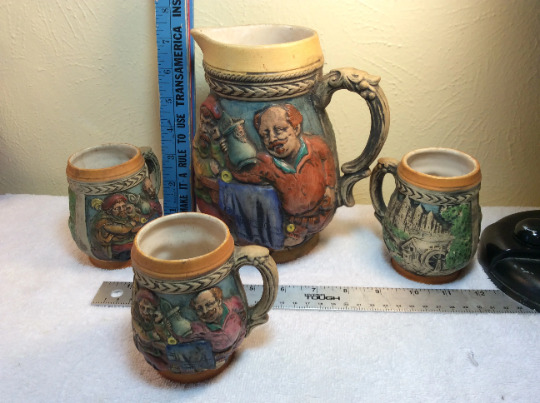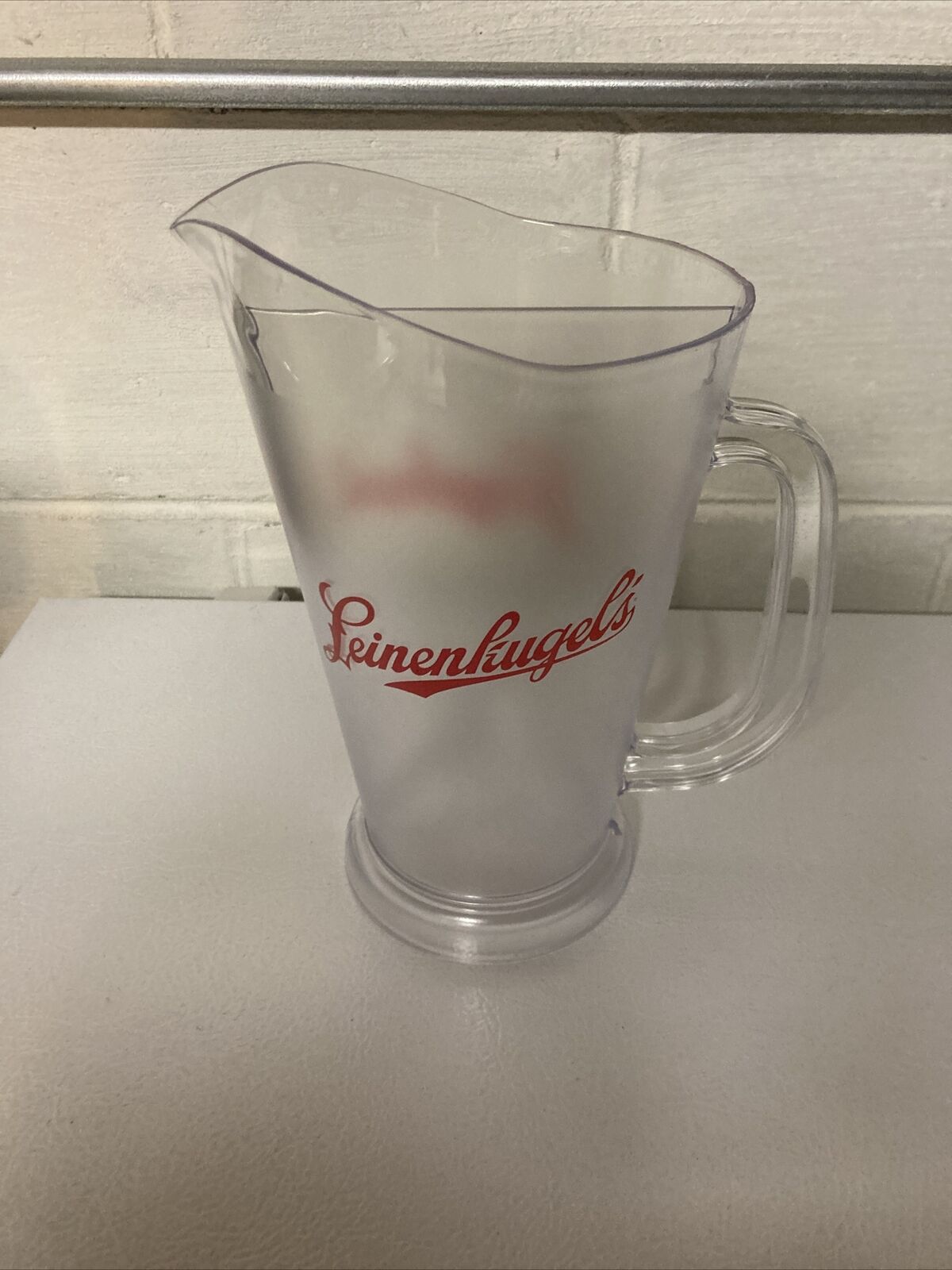-40%
1933 Pearson & Co. Stoneware Beer/Wine Jug, S.F. Jones & Sons Manchester England
$ 44.35
- Description
- Size Guide
Description
Glazed Stoneware Beer Jug c. 1933.1933 Pearson & Co. Pottery Stoneware Beer/Wine Jug
Very Clean and in Very Good Condition.
Nice Glossy Glaze
Tane and Beige Color.
Manufactured for S.F. Jones & Sons Brewers and Wine Merchants.
377 City Road, Manchester England
Approximately 11 in. x 6 in. wide
Weights 5 lbs. 7 oz without the Box and Packing material
Ships from the USA
Fast Order Processing
Pearson and Co (Chesterfield) Ltd. Earthenware potters of The Potteries, Whittington Moor, Chesterfield
A pottery was in existence on the site prior to 1810.
1810 The pottery was acquired by the Pearson family
1911 The first continuously fired tunnel-kiln was introduced.
By 1953 A large portion of the coal and clay used in the works was mined in the firm's own pits. Products included industrial containers, tower packing rings, domestic cooking ware and art ware; bricks, special blocks and shapes made of refractories; concrete slabs, fire backs, and wicker goods.
Also known as Whittington Moor pottery, the works employed over 620 people at its height. The group of Pearson potteries occupied an area of 6 acres and had their own clay pit at Wingerworth, and colliery about a quarter of a mile away from the pottery. The pottery made great benefit in the rise of imported sugar by creating suitable containers for the growing fruit preservation trade, alongside ale bottles and pop-bottles. (6) Whittington Potteries came into the possession of the Pearson family in 1810 when it was acquired by Catherine Johnson (nee Pearson). The business became a limited company in 1922 when Mr. Theophilus Pearson succeeded Johnson Pearson, after his death. In 1939, the Oldfield Pottery, trading as James Pearson Ltd., merged with Pearson & Co. and consolidated at the Whittington Moor Potteries. Throughout the early period, Vintage Dressler tunnel ovens were used to fire all pottery products. During the Second World War one portion of the factory was given up for the production of shells. An important section of the firm's business was to manufacture the Royal Navy's rum bottles, the popular size being one gallon. These bottles were also basket woven on site. Much of the material produced on site was exported in principle to the Commonwealth markets and Scandinavia, with about 65-70% of the output to be distributed at home. The site also had its own art department to create an number of ornamental products such as vases and lamps. (7) Pearson's Pottery started in 1810, the owner then being William Johnson, his wife Catherine Johnson (nee Pearson) took over when he died and owned it until 1849-1850. From the census of 1851, her brother James Jarvis Pearson is listed as the owner, employing 45 males and 20 females, showing it was quite a large pottery then. In the early 1890, Johnson Pearson took over the pottery and lived in the Red House. His son Theo Pearson was the last in the line and having no descend
ants to leave the pottery to, it went to his in-laws whose name was Short.
